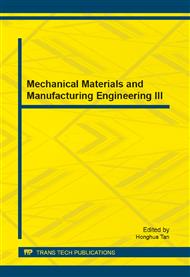p.220
p.224
p.228
p.232
p.236
p.242
p.248
p.253
p.261
Effect of Acceleration Pulse Shape on Damage of the Specimen under Hopkinson High-g Loading
Abstract:
Based on the free Hopkinson pressure bar high-g loading technique, the pure cylindrical lead was mounted on the end section of the incident bar as a specimen to obtain the change law of the axial strain with the shape of acceleration pulses. Both the experimental tests without using pulse shaper and numerical simulations under sine-shaped acceleration pulses were performed and axial strain of the specimen was measured. Results revealed that the shape of acceleration pulse shows highly effect on the damage of the specimen. The axial strain of the specimen arises linearly with the increasing of the acceleration peaks whose durations are all 17μs; while, due to the complexity of plastic wave propagation, 135μs is a critical duration at which axial strain reaches to the maximum under the condition of different durations. The final axial strain of the specimen is determined by both the stress level and stress increment in every time step.
Info:
Periodical:
Pages:
236-241
Citation:
Online since:
November 2013
Authors:
Keywords:
Price:
Сopyright:
© 2014 Trans Tech Publications Ltd. All Rights Reserved
Share:
Citation:


